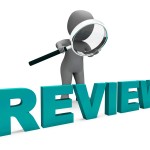
The Musculsoskeletal Elf is having a winter warm up ready for regular blogs next year so let’s get started with some intersting new background reading.
A great recent publication by March and colleagues 2014 summarises the global and regional prevalence, disability (Years Lived with Disability (YLDs)) and overall burden (Disability Adjusted Life Years (DALYs)) and costs for common musculoskeletal disorders including low back and neck pain, hip and knee osteoarthritis, rheumatoid arthritis, gout and other conditions. The authors also describe the contribution of the role of pain in disability burden along with trends over time and predictions of increasing MSK disability with demographic changes.
Prevalence
The global age-standardised point prevalence and 95% confidence interval (CI) or uncertainty interval (UI) in 2010 for;
- Low Back Pain: 9.4% (95% CI: 9.0-9.8) and was higher in males and peaked at age 80 years.
- Neck pain: 4.9% (95% UI: 4.6-5.3) and was higher in females and peaked at age 45 years.
- OA: 3.8% (95% UI: 3.6-4.1) and was higher in females peaking at age 50 years
- RA: 0.24% (95% CI 0.23e0.25) and was higher in females and increased with age.
- Gout: 0.076% (95% UI 0.072-0.082) and was higher in males increasing steadily from age 30 years.
- Other disorders: 8.4% (95% UI 8.1-8.6) increasing with age and slightly higher in females
Years Lived with Disability (YLDs)

Low back pain is responsible for almsost half of the total disability burden for musculoskeletal disorders.
YLDs quantify disease disability related to any short-term or long-term health loss. For all MSK diseases combined about half of the total disability burden (49.6%) was from LBP. Other substantial disability buden was seen for Neck Pain (20.1%), other MSK disorders (17.3%) and OA (10.5%) whereas RA (2.3%) and gout (0.1%) contributed a relatively small amount of burden.
Compared with other health conditons all MSK disorders combined accounted for 21.3% of the total YLDs, globally, second to mental and behavioural disorders (23.2%).
The authors conclusion is that
the number of people suffering from MSK disorders throughout the world will increase dramatically over the coming decades, and this will result in an exponential increase in the burden from MSK disorders.
The Musculoskeletal Elf’s view
 Well this review article gives a fantastic summary of the prevalence and burden of musculoskeletal disorders. It is probably no suprise that LBP accounts for so much of the disability burden. But what about the Years Lived with Disability? MSK disorders accounted for over a fifth of the total YLDs for all health conditions.
Well this review article gives a fantastic summary of the prevalence and burden of musculoskeletal disorders. It is probably no suprise that LBP accounts for so much of the disability burden. But what about the Years Lived with Disability? MSK disorders accounted for over a fifth of the total YLDs for all health conditions.
Is this what is reflected in your clinical practice?
Do you have similar proportions of referrals for these disorders?
What about the gender and age characteristics of the various disorders, are these what you see too?
Why not send us a comment and become part of the ever expanding Musculoskeletal Elf community and we will know that you are out there….Until next time…remeber you can also follow us on Facebook and twitter.
Links
- Burden of disability due to musculoskeletal (MSK) disorders. Lyn March, Emma U R Smith, Damian G Hoy, Marita J Cross, Lidia Sanchez-Riera, Fiona Blyth, Rachelle Buchbinder, Theo Vos, Anthony D Woolf (2014) Best practice & research. Clinical rheumatology 28 (3) p. 353-366 http://www.sciencedirect.com/science/article/pii/S1521694…

The burden of musculoskeletal disorders http://t.co/J2AbcviJeV
Whats the burden of #musculoskeletal disorders http://t.co/1xf0BD4kbh @arthritiscare
blog burden #musculoskeletal disorders @physiowizz @physioMACP whats your view? http://t.co/1xf0BD4kbh
#MSK disorders whats the burden? Do you agree @PTThinkTank @Arthritis_Info http://t.co/1xf0BD4kbh
Today’s blog http://t.co/1xf0BD4kbh Q. Does this reflect your clinical practice? @thecsp @physiotalk
Do you know the burden of #musculoskeletal disorders http://t.co/1xf0BD4kbh @theCSP @CochraneMSK
@NHS_Education @NHSinform Today’s blog covers the prevalence and burden of musculoskeletal disorders http://t.co/1xf0BD4kbh
@ozcboss http://t.co/L61mQAz9Up. Our EQ5D data would be so powerful to demonstrate the diff we make to burden of msk conditions cited here